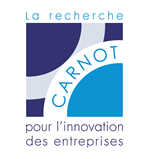Latest fingerprint reader for a more accurate and secure identification
Supporting Innovation
Since their general application in 2003, fingerprint readers have been the target of increasingly sophisticated fraud attempts.
At the same time, a few ‘genuine’ but too damaged fingerprints were not properly recognised by these devices.
To overcome these two subjects Telecom SudParis* researchers relied on the so-called optical coherence tomography (OCT) imaging technique. They used the correlation between the external fingerprint, consisting of an embossed outer layer, and the internal structure of the fingertip skin combined with the sweat pores layout.
The relevant biometric data acquisition is performed by the BioDigital device through a contactless light beam. Incoherent diagrams alert on fake finger prints.
Any damaged-skinned eroded fingers are offset by a complete and reliable sub-cutaneous print.
*An entity of the Télécom & Société numérique Carnot Institute.
copyright : IDEMIA
The client needs
IDEMIA, a recognised leading player in the field of biometric identification, was born from the merger between Oberthur Technologies** and Morpho+ in 2017.
To build on and consolidate its position as a global leader, the company’s 13000 employees – including 2000 R&D engineers – have to be able to anticipate any fraudulent attempts at biometric data.
To determine, to this end, the effectiveness of the BioDigital solution conducted by Bernadette Dorizzi and Yanek Gottesman from Télécom SudParis, IDEMIA made a specific algorithm and a reference database available.
The first finding was that Biodigital improves indeed the precision and reliability of fingerprint comparison with a near 100% false print detection rate.
A relevant patent has been registered and close collaboration between the teams made it possible to finalise a product design for a contactless fingerprint reader based on such patent.
** French-based specialist in digital security
+ French-based specialist in security and identity solutions
Partnership
The Télécom & Société numérique Carnot Institute incorporates Télécom SudParis, an engineering school whose Cybersecurity platform stands out for its ability to enable various realistic situations to be simulated.
The BioDigital technology was developed within the Biometrics unit. It makes it possible to obtain a high-quality image reconstruction of the internal fingerprint once light wavelengths are projected across the finger pulp layers.
The specific lighting into the fingers sends various echoing information to the reader depending on depth. These data allowed to reconstruct a high-resolution 3D image of the internal fingerprint, which is then compared with the embossed external fingerprint.
Between these two fingerprints, the additional rebuilt of the sweat pores network makes the process safer.
The Carnot teams have really taken up the technical challenge and transferred the technology to IDEMIA, thus improving the latter’s competitive advantage in the field of ‘Augmented Identity’.

